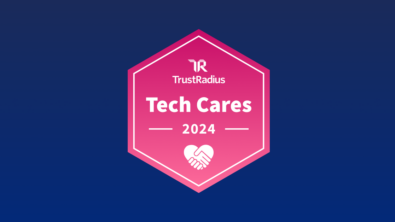Guest Post: How to develop your next blockbuster product
 This guest blog post is by John Fox, VP of Marketing, Mainstream Engineering, Siemens PLM Software
This guest blog post is by John Fox, VP of Marketing, Mainstream Engineering, Siemens PLM Software
What would you do if the demand for your product went from 100,000 units a day to almost nothing within a span of several months? That’s exactly what happened to Razor USA and their flagship kick scooter during the Christmas season of 2000. The market had become oversaturated and sales plummeted.
Razor bounced back from that early setback. And today, CEO and founder Carlton Calvin tells Bloomberg TV that Razor is having their best year ever.
What are the secrets to Razor’s success? I spoke with R&D Manager Bob Hadley, who’s been with Razor since the beginning, and found out.
The following critical success factors have enabled Razor USA to survive – and thrive – in a difficult and competitive market.
Clearly define your target market – then develop a portfolio of products
Although the kick scooter market eventually bounced back and now represents 25% or more of their business, Razor was not content to be a “one hit wonder” or produce endless variations of the original product. They defined their business more broadly – they were in “the wheels business.” And from that strategy came a string of successful products in various categories: the original scooter, the two-wheeled Rip Stick, the three-wheeled PowerWing, and their latest, the electric powered Crazy Cart, a wildly popular, viral product that was a big hit this holiday season (more on that later).
Build an efficient process that quickly turns good ideas into great products
“In our industry, it’s important to be able to vet out design ideas as quickly as possible,” Hadley says. He estimates that for every 100 ideas, about 10 make it to the prototype stage for validation. Of these perhaps only one concept gets to market in full production. And only one out of every twenty commercial products might be considered a blockbuster. Razor uses Siemens PLM Software’s Solid Edge to design and develop their products. Hadley says that one of the key advantages of Solid Edge is that it enables the team to design quickly and communicate clearly with manufacturers in China – both factors enable Razor to streamline their prototyping process and reduce their time to market by as much as 50%, when compared to earlier techniques.
Be open to new sources of innovation – and don’t trust focus groups.
Hadley says that Razor “is not big on focus groups,” which he says tend to provide too small a sample. Instead Razor largely relies on a core team and the testing and validation funnel described above, which incorporates tough go/kill decision points. Key inputs to that process include direct observation of children’s play patterns and some measure of what he describes as “gut feel.”
The idea for Razor’s latest success, the Crazy Cart, came from Razor Brand Manager Ali Kermani. The Crazy Cart is an electric go cart with a release bar that enables the rider to spin freely, and “drift” through turns. Karmini refined the product as part of his MBA thesis at UCLA’s Anderson School of Management.
As Kermani learned in marketing the product, the best way to describe it, is to show it in action. So take a look.
Embrace new ways to get the word out
Bloomberg BusinessWeek reports that Razor’s Crazy Cart was one of the hottest toys of the 2013 holiday season. Hadley reports that all the excitement stemmed from two videos that the company put on YouTube that went viral in just a few days. Hadley says that in the old days most of the communication with the consumer was done via the product’s box as it sat on the store shelf. Social media, specifically YouTube, has changed that.
Today, a search on YouTube for “razor crazy Cart” yields about 23,500 results. CEO Calvin tells Bloomberg TV “I’ve seen the power of social media now. And it’s going to revolutionize my business.” Razor plans to hire a social media team who will be tasked with helping people better understand their products and spread the word.
Adopt a long term strategy with a focus on innovation
Razor sees big potential with their patented Crazy Cart, and plans to spend the near term keeping up with demand. The Crazy Cart is expected to out sell the flagship Razor scooter this yea. But they are not neglecting their previous products, taking a similar long term view. Take for example, their three-wheeled PowerWing scooter. With spinning castor wheels, it’s a bit like a cross between the original scooter and the Crazy Cart. Released several years ago, the PowerWing is facing more competition these days. Hadley reports that it’s due for a design refresh. This is one of the reasons Razor has partnered with Siemens PLM Software and Solid Edge to sponsor a design challenge with GrabCAD.
Take the Challenge: How to enter and win the ‘Get Radical’ Razor PowerWing Scooter Design Challenge
Design criteria are described on the challenge landing page. Participants are encouraged to do a bit of research into the PowerWing’s product category and check out some of its competitors.
Participants must use Solid Edge for the design, and a free trial is available.
Judges include
- Bob Hadley, R&D Manager at Razor
- Sara Sigel, Community Manager, GrabCAD
- Al Dean, Editor-in-Chief, Develop3D
- Josh Mings, Marketing Manager, Luxion
- Dan Staples, Vice President, Product Development, Siemens PLM
Design criteria are described on the challenge landing page. In addition, I’d recommend participants do a bit of research into the PowerWing’s product category and its competitors.
There will be a live webcast on January Thursday January 16, 2014 at 2:00 pm, EST for all participants who want additional help getting started. But long-time Solid Edge user Hadley emphasizes how easy it is to get started and get productive on Solid Edge. In his initial experience with learning Solid Edge, which integrates elements of both direct and parametric modeling, he accomplished more in one hour than in one month at a course that featured another CAD system.
Register Now. Good luck and have fun!
Related Links
- Razor’s Crazy Cart, the Scooter That’s All the Rage (Bloomberg TV)
http://www.bloomberg.com/video/razor-s-crazy-cart-the-scooter-that-s-all-the-rage-d6_GsmN0RlaM_S565CdIDA.html - Razor CEO: Crazy cart is insane fun – CNBC
http://video.cnbc.com/gallery/?video=3000228612 - Razor’s website http://www.razor.com/
- Solid Edge Website: www.solidedge.com
- GrabCAD’s ‘Get Radical’ Razor PowerWing Scooter Design Challenge https://grabcad.com/challenges/get-radical-razor-powerwing-scooter-design-challenge
- Getting Started with Solid Edge Webcast
Comments
Leave a Reply
You must be logged in to post a comment.



This article provides a compelling exploration of how Razor USA leveraged strategic innovation, efficient processes, and modern marketing to not only survive but thrive in a competitive market. The insights into the importance of rapid prototyping, a well-defined product portfolio, and the transformative power of social media are particularly valuable for anyone looking to develop a blockbuster product. Razor’s commitment to long-term innovation and its embrace of unconventional approaches, like avoiding reliance on focus groups, showcase a bold and effective methodology just like https://twistlockdynamics.com . A great read for entrepreneurs and product developers alike!